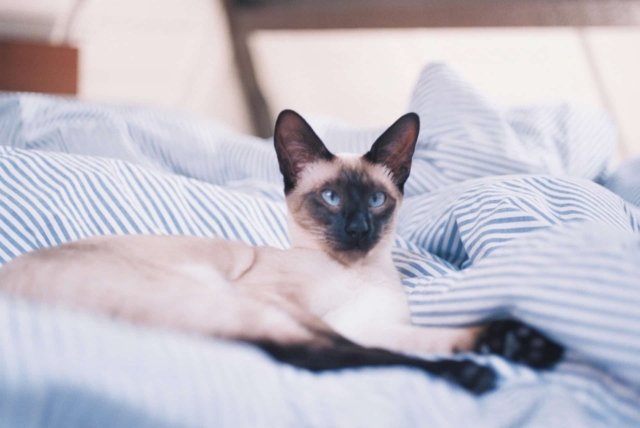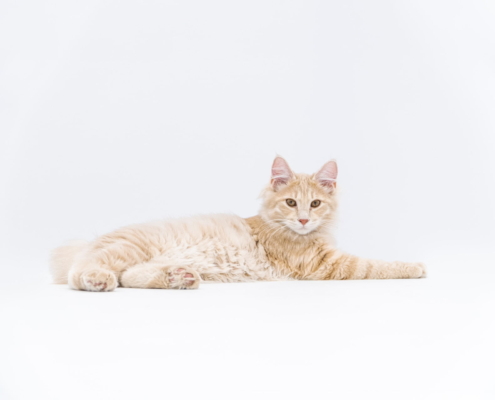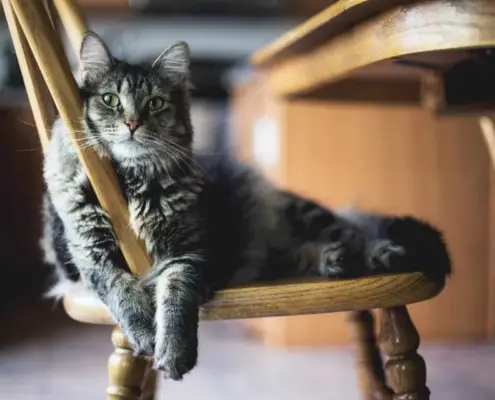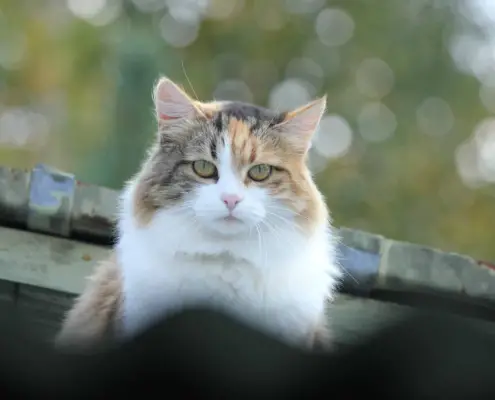
Cats have long been a source of fascination for humans, with their mysterious behaviors and keen senses. One aspect of their sensory perception that has intrigued scientists and pet owners alike is their vision. How do cats see the world around them, and do they see the same way humans do? In this article, we will delve into the science of sight, exploring the similarities and differences between cat and human vision.
The Anatomy of Cat Eyes and Human Eyes
To understand how cats and humans see, it is essential to examine the anatomy of their eyes. While both species have similar structures, there are notable differences. Cats have larger and more prominent eyes compared to humans. Their elongated shape provides a wider field of view, allowing them to detect movement more effectively. Humans, on the other hand, have rounder eyes that are better suited for focusing on stationary objects.
Another key difference lies in the presence of a reflective layer behind the retina in cat eyes called the tapetum lucidum. This layer enhances their night vision by reflecting light back through the retina, giving their eyes a glowing appearance in the dark. Humans lack this layer, which is why our night vision is relatively poor compared to cats.
The Difference in Color Perception between Cats and Humans
When it comes to color perception, cats and humans have distinct differences. Humans are trichromatic, meaning we have three types of color receptors or cones in our eyes that are sensitive to red, green, and blue light. This allows us to perceive a broad spectrum of colors. Cats, on the other hand, are dichromatic, meaning they have only two types of color receptors, sensitive to blue and green light. They lack the ability to see the color red, perceiving it as a shade of gray. This fundamental difference in color perception has a significant impact on how cats and humans see the world around them.
Do Cats See Better in the Dark?
It is a common belief that cats can see in complete darkness, but how accurate is this claim? While cats do have superior night vision compared to humans, they still require some level of ambient light to see. The tapetum lucidum, mentioned earlier, plays a vital role in maximizing the available light in low-light conditions. This gives cats a distinct advantage when it comes to navigating in dimly lit environments. However, in absolute darkness, cats’ vision is limited, just like humans’.
How Cats and Humans Perceive Motion
Cats are renowned for their ability to detect and track fast-moving objects, such as prey. This is due to their high number of rod cells in the retina, which are specialized for motion detection. Humans, on the other hand, have a higher concentration of cone cells that are responsible for color vision and detail. This fundamental difference in the distribution of photoreceptor cells explains why cats excel at tracking moving objects while humans are more adept at recognizing fine details and colors.
Depth Perception in Cats and Humans
Depth perception is crucial for both cats and humans to navigate their surroundings effectively. Humans rely heavily on binocular vision, where the brain combines the slightly different images from each eye to perceive depth. Cats, on the other hand, have a more limited degree of binocular vision due to the position of their eyes on the front of their head. They primarily rely on monocular cues, such as motion parallax and perspective, to judge distances. Despite this difference, both cats and humans have adapted their visual systems to perceive depth accurately.
Can Cats See Things that are Invisible to Humans?
Cats are often associated with their ability to detect and interact with things that seem invisible to humans. One explanation for this phenomenon lies in their heightened sensitivity to motion. Cats can detect even the slightest movement, which allows them to spot prey or potential threats that may go unnoticed by humans. Additionally, their exceptional hearing and sense of smell further contribute to their ability to detect hidden objects or creatures.
Similarities and Differences in Visual Acuity between Cats and Humans
Visual acuity refers to the sharpness of vision, and both cats and humans possess impressive visual acuity. However, their acuity is optimized for different purposes. Cats have a higher visual acuity when it comes to detecting small movements or objects in low-light conditions. On the other hand, humans have superior visual acuity for discerning fine details and colors in well-lit environments. These differences are a testament to the unique evolutionary adaptations of each species.
Understanding How Cats and Humans Focus their Vision
The ability to focus vision is essential for both cats and humans, allowing them to identify and analyze objects at various distances. Cats have a unique mechanism called a “visual streak,” which is a horizontal band of increased visual acuity along their retina. This adaptation enables cats to focus their vision more effectively on objects in their immediate vicinity. Humans, on the other hand, have a more uniform distribution of visual acuity across their retina. These differences in focusing mechanisms reflect the specific visual needs of each species.
Do Cats See the Same Way Humans Do?
In conclusion, cats and humans have notable similarities and differences in how they see the world. While cats have superior night vision and are adept at tracking fast-moving objects, humans excel at perceiving fine details and a broad spectrum of colors. These differences are attributed to variations in the anatomy and distribution of photoreceptor cells in their eyes. Despite these disparities, both cats and humans have evolved to adapt their vision to their specific needs, allowing them to navigate and interact with their environment effectively. So, while cats and humans do not see eye to eye in every aspect, their unique visual abilities contribute to the beauty and diversity of the animal kingdom.
If you enjoyed my article, I would appreciate you sharing it with your network.

Sima Ndlebe
Sima writes for CatBuzz. He is interested in Cats, Health and Fitness, and Entrepreneurship.
Published: 15 November 2023




